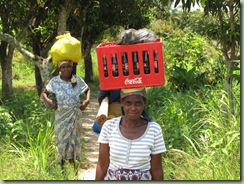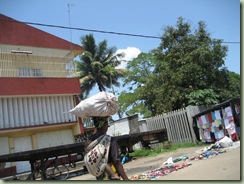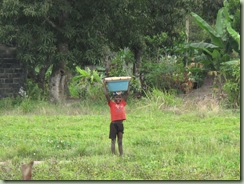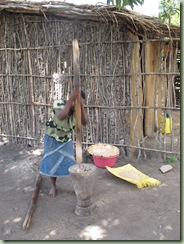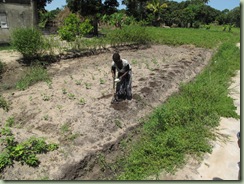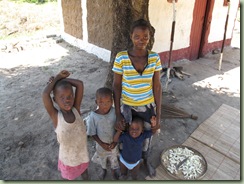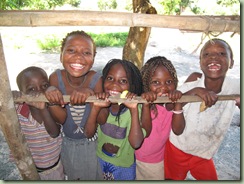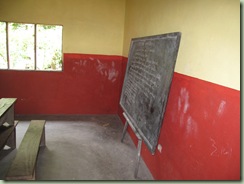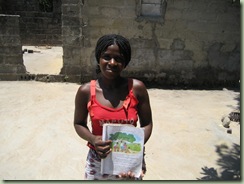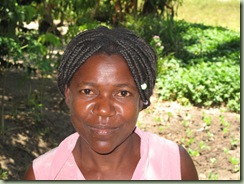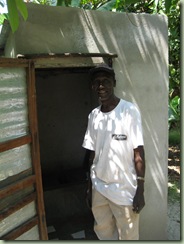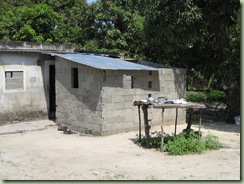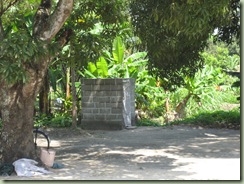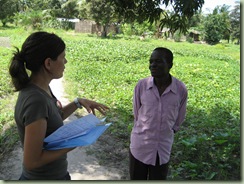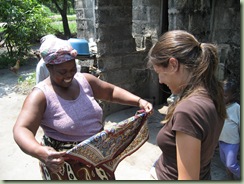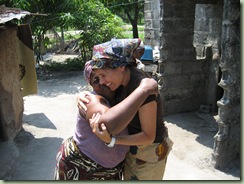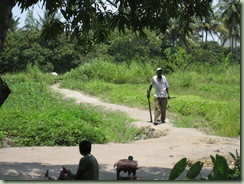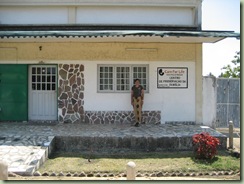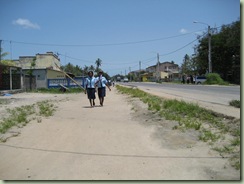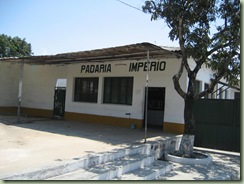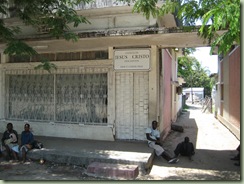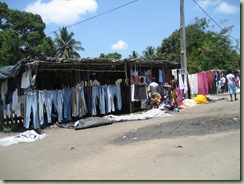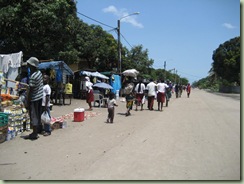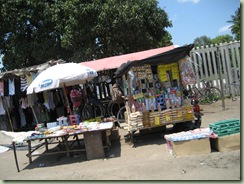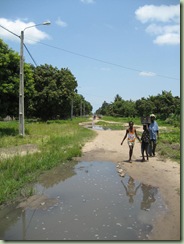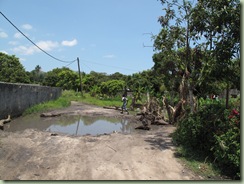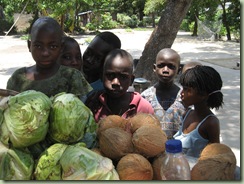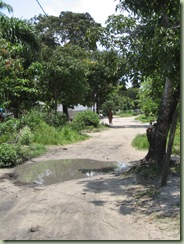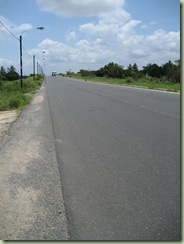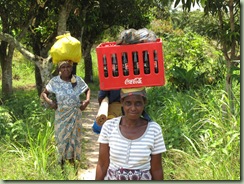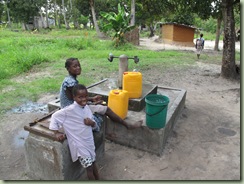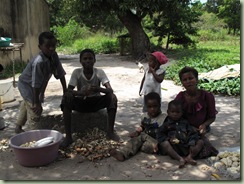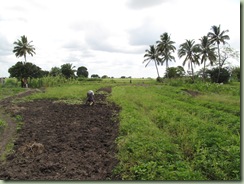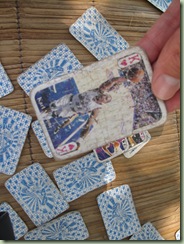Tal and I find it hard to believe that we have been in Mozambique for only five weeks, because in some ways we feel like it has been multiple months! We feel like we have immersed ourselves in Mozambique’s beautiful culture and traditions. Along with this understanding of Mozambique’s beauty, we have also come to understand some of its harsher realities. One of those harsher realities is the situation of women here in Mozambique.
This is Tal… The topic of women and women’s rights has been close to Anita’s heart long before we left for Mozambique. In fact, we have had many discussions about how women may feel all over the world and so I am not surprised she is writing a blog about it.
Back to me again… Just to clarify – I am certainly no women’s rights fighter, but this topic of women is close to my heart, because I am a woman and I can sympathize and empathize. And I am also writing about this topic because we have all heard this statement that people in third world countries seem so much happier than people in first world countries. So much so that some wish to figure out their secret to happiness. And I am not going to negate that we have found a lot of happiness here, but we have also found hardship and pain. And that is what I want to blog about today. Talk about a downer – sorry. So if you are not up for that, you can stop reading here…or skip to the end where there is good news.
Polygamy
So why not start of with Polygamy? Polygamy is a big, harsh reality here and I don’t think it is something that most women anywhere would like to deal with.
History - Mozambique was colonized by the Portuguese around 1500 AD, but long before then, around 900 AD, Arabs started settling various areas of Mozambique. Alongside their culture they also brought with them their religion and as a part of that, polygamy. It is interesting to note however, that polygamy is not an exclusively Arab import here in Mozambique, because many tribal traditions were already supporting the practice of multiple wives as a status of power and wealth. I also want to point out that polygamy in Islam is no longer the norm and is only found in countries where traditional Arab cultures prevail. Many countries such as Turkey, Egypt, Morocco, Tunisia etc. in fact prohibit polygamy.
But over the centuries Mozambique, along with many other traditions, was able to hold on to polygamy and it is still a common practice today. In fact it is so widely acceptable that it has spread across many faiths and it is not surprising to see men with multiple wives around here.
Women, of course, have little to no say in the practice of polygamy and often have to simply accept the men’s decision on the matter. Even after a second or third marriage, most of the women will stay with their husbands, because much of their livelihood depends on their men.
There are, however, some signs of improvements as some women are starting to divorce the men who take on a second wife. In fact, there is a woman working for Care For Life, who divorced her husband because he took on a second wife against her will. So, although the percentage is low, many have started to stand up for themselves.
This is Tal… Above is a picture of Anita with the two strongest women in the community of Mungassa. The woman on the left (Boneze) wears with pride a T-shirt of the first female Secretary of State in Mozambique. Boneze is one of the women, who has a strong will and has learned to fend for herself since her husband passed away in the civil war a decade ago. She has 5 kids and teaches the “Stay Alive” HIV/AIDS training class to the 9-14 year olds in the community. The one in the middle, Amelia, is a fire cracker. She doesn’t let anyone mess with her and has a mind of her own. She jokes a lot and the other day greeted me with “oi meu marido” which means, “hi my husband”. So we really enjoy the company of both of these women.
I tried to write about the third woman, the one on the right (and it was gooood), but my wife deleted it!
Women’s subservient role in the society
Men come first most of the time and this is especially true in the poorer communities like Mungassa. For example, when we conduct interviews it is very rare that the women speak up in the presence of their husbands. The man of the house is the “chef” and therefore speaks for the family. The women only say something when addressed directly by us, otherwise they sit there quietly, knowing their place in society. Another example is when we arrive at a house in the community, the women rush out to bring chairs to sit down – chairs for us and one for their husband. They then proceed to sit on the dirt floor. Even when Talmadge gallantly offers them the chair, most shy away from it. Gentlemen behavior is unheard of here.
It starts at a young age…
This subservience, of course, reaches across many other areas. Another one is that when it is time to eat and meat is available (it is very rare for them to have meat in their diet), the man gets the biggest piece of meat, his wife gets a smaller piece, and the children almost nothing. This takes place even when the women are pregnant and need the extra protein and nutrition or when the children are already malnourished.
We have noticed that many burdens of this society rest upon the women – literally. Women carry the heavy loads – we see them carrying water buckets filled to the brim (always on their heads), huge bags of sweet potatoes, tools for the fields, wood for building their houses, and pretty much anything else. And they will walk for hours carrying those loads. One woman told us that she just finished carrying wood (70 kg) for 6 hours back to her house! I have wondered what kinds of chronic pains they end up with from carrying those loads for all these years, but the sad thing is they hardly live long enough for us to know that. (The life expectancy of women is around 44 years).
Going back to the loads - up until now we have only seen one man carrying something on his head, but that was only because there was no woman by his side. If there is a woman with him, she is the one to carry the heavy load while he walks leisurely next to her. Talmadge is sitting next to me and just mentioned that he does see men carrying loads – just in a smarter way. :) Well, he is right in that men usually have bikes and carry their loads that way, but that brings up another question as to why women don’t have bikes... Anyway, so I guess I am only right in saying that men don’t carry loads on their heads…or in the presence of a woman.
The women also do all the house work – they work HARD every day. I often see women in the fields harvesting sweet potatoes, cooking the meals, tending to the children, cleaning their houses and surroundings while I often see the men sitting around chatting with their neighbors. At the same time, I guess a blog could be written about the hardships of men not finding jobs to support their families and what that feels like. The unemployment rate in Mozambique is currently at 90%. (Yes you read correctly – 90%!)
I am always impressed by the physical strength of these women, but know that their loads are certainly not only physical, but also emotional and we can often see it in their eyes.
While carrying their babies on their backs…
Tools on their head…
Even at a young age they know how to balance the weight
Making corn flour
Preparing lunch
Working in the fields
Women and sex
The topic that I find hardest to process is the way sex is viewed here. First of all girls get married off as early as 14 years old. This is rarely done out of their own free will – it often happens that their father negotiates a “deal” with a friend/neighbor (often an older man) to have his daughter married off (usually for a sizeable dowry).
The other way early marriage takes place is that the girl gets pregnant (often as early as 12) and marriage comes as an aftermath. These premature sexual encounters stem from the fact that many women don’t feel that they can say no when it comes to a man demanding sex. As a consequence they don’t have a healthy understanding of their own bodies and their personal rights.
We have also read that during times of need the husband/father will ask his wife/daughter to sell herself for sex to generate a little income for the family (never mind AIDS…). I cannot wrap my head around the emotions that these women may have in those circumstances.
Also, it is well known that many men are not faithful to their wife (wives) and often bring AIDS into the family. In Mozambique over 13% of the population is infected with the HIV/AIDS virus.
Young mothers…
Education
Women in Mozambique don’t have many “rights”. In a family, the boys come first and that is also the case when it comes to education. Boys are sent to school, whereas girls are often kept at home because there is no “need” for them to be educated. As a result, most of the women we encounter here in the poorer communities are illiterate and have had very little or no education. (Please note that in the cities changes have occurred and many women are attending school and the universities. What I am describing here is mostly found in the rural and poor communities).
Aside from the fact that they are deprived of an education, it can also be detrimental for them when it comes to raising a healthy family. For example, without reading they are not able to identify any road signs and so it is difficult to take the bus or read road signs. Another example is that if any family member gets sick and they receive medication from the doctor, they are unable to read the prescription. In order to change the cycle, women need to learn to read so that they can register their children and send them (both boys and girls) to school.
The faces of the future (see below)
The school in Mungassa (see below)
Typical classroom
At last a little bit of good news…
I hope you have stuck with me until here, because there is some good news too. Things are changing, although slowly. Just this year a domestic violence law was passed, because the women here had enough of being beaten up by their husbands without any repercussion and so now they have the law protecting them. This does not mean that domestic violence has diminished, but at least there is now a law in place.
The other good news is that more women are going to school. And through their education they are learning to support themselves and are no longer fully dependent upon their husbands. As mentioned above, there are many women attending universities in the bigger cities and men and women alike understand that education will change the future generations.
One of the girls in Mungassa studying for an exam
The women here have wonderful, strong spirits. It’s fun to interact with them, to laugh, to joke, and to sometimes hear their strong opinions of what a man’s role should be. They are strong willed and not much different from women anywhere else in the world. These characteristics can best be observed when the women are together in groups. This is when their true selves shine. Yesterday we were at a celebration that Care For Life put together and it was so much fun to see the women dancing, singing, arguing, laughing and interacting with everybody. In fact, in many ways they had more visible roles in the celebration than the men did.
These women are compassionate, they love their children and care for their families in beautiful ways. Care For Life is one of the hopes of change for the women as its program is supporting the role of women in leadership, at home and in the society. They are taught to read and write, they are taught to speak up about domestic violence and Care For Life encourages the men to treat their wives better. So in all of this, there is hope that things can and will be better for the women here in Mozambique. And they already are in some situations.
Women learning how to write with Care For Life
I hope you have enjoyed learning about the women of Mozambique and though this highlights some of challenges of women, it does not speak on behalf of all of the women and men here in Mozambique. We have also met outstanding examples of husbands, who love their wives and children and would do anything for them. Like all stereotypes, they exist because there is a huge population that acts like that, but that does not mean everybody. I in no way want to create an opinion of exclusivity, but I just wanted to show the reality of many women here in Mozambique.


